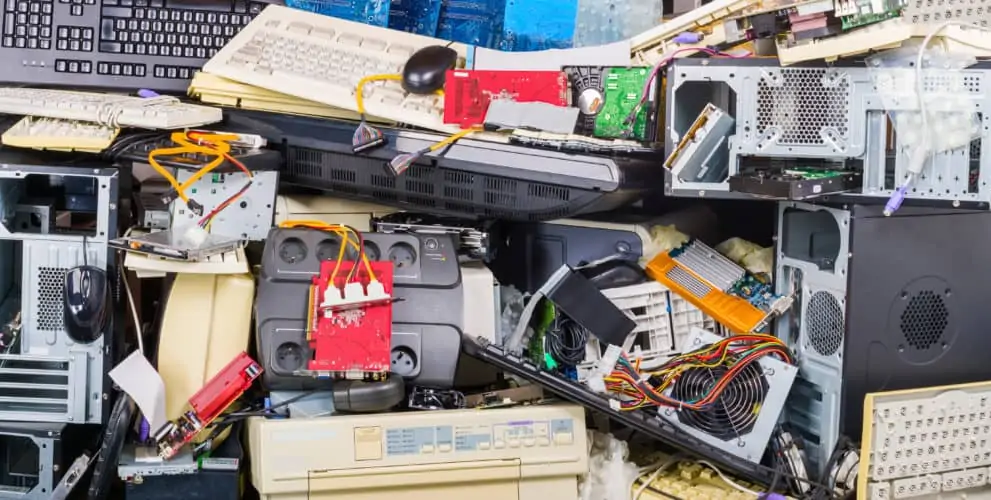Everyday technology is used to make our lives easier. Phones, laptops, TVs, and even smartwatches all are used until they’ve stopped working or the upgraded version of the product is released. But then what do you do with the technology that’s no longer working? Well, that’s e-scrap and disposing safely of those items is imperative.
What is E-Scrap?
E-scrap is technology that is no longer in use and needs to be thrown out. This can be a piece of equipment that is no longer in use or something that’s broken. This can also sometimes be referred to as e-waste. It often contains hazardous materials that pose a danger to workers and environments where those chemicals or materials can break down over time. Some examples of things classified as e-scrap would be computers, phones, televisions or smartwatches.
E-scrap isn’t the same as medical waste, which is waste created normally in hospitals or at-home care needles and has entirely different disposal and health concerns. E-scrap is also not the same as battery recycling. E-scrap material usually includes some sort of battery within but not batteries used in your remotes or fire detectors. These are different and therefore also follow different guidelines for disposal.
Environmental and Health Impact
Pollution is a problem throughout the world and e-scrap is known to contain chemicals and products known to damage the environment. These are some of the hazardous materials e-scrap may contain; beryllium, lead, flame retardants, arsenic, or cadmium to name a few. These materials are often sent to landfills where they can end up being burned. This releases toxic fumes into the air, which isn’t a good thing for the environment or organic life.
These same ingredients can cause problems in humans or other animals that come into contact with it. The dangers pose risk to the workers in landfills who are most likely to be in direct contact with or exposed in some way to the materials if not properly disposed of. If the hazardous materials are released into the air, the pollution poses a greater risk beyond the workers and could potentially harm many others as well. Overall, it is best to safely get rid of e-scrap.
Recycling or Disposing of E-Scrap
Recycling can be an effective way to decrease the amount of hazardous leaking from the e-scrap. Recycling can mean safely dismantling the piece of technology to salvage usable materials, such as the metal, and disposing of the batteries or other chemicals safely. A common material salvaged in the e-scrap process is aluminum, as that can be lucrative and is often used by car companies. E-scrap can also recover precious metals that can be reused again in other productions of similar or different items.
The other way of recycling is called refurbishment. This is a process that takes a still usable piece of technology and fixes it so that it can be resold and used again. Many people will buy refurbished technology products as an affordable alternative to buying a brand new device.
If recycling isn’t an option for the product then it’s important to dispose of the e-scrap safely. Depending on the regulations of the state, this can vary from specific burning, burying, or disassembly. If you’re curious about your state’s regulations or are looking to dispose of your e-scraps effectively you should research the guidelines first.
If you’re looking into processing bulk materials for your company or yourself, check out General Kinetics to learn more about the recycling products we provide.






